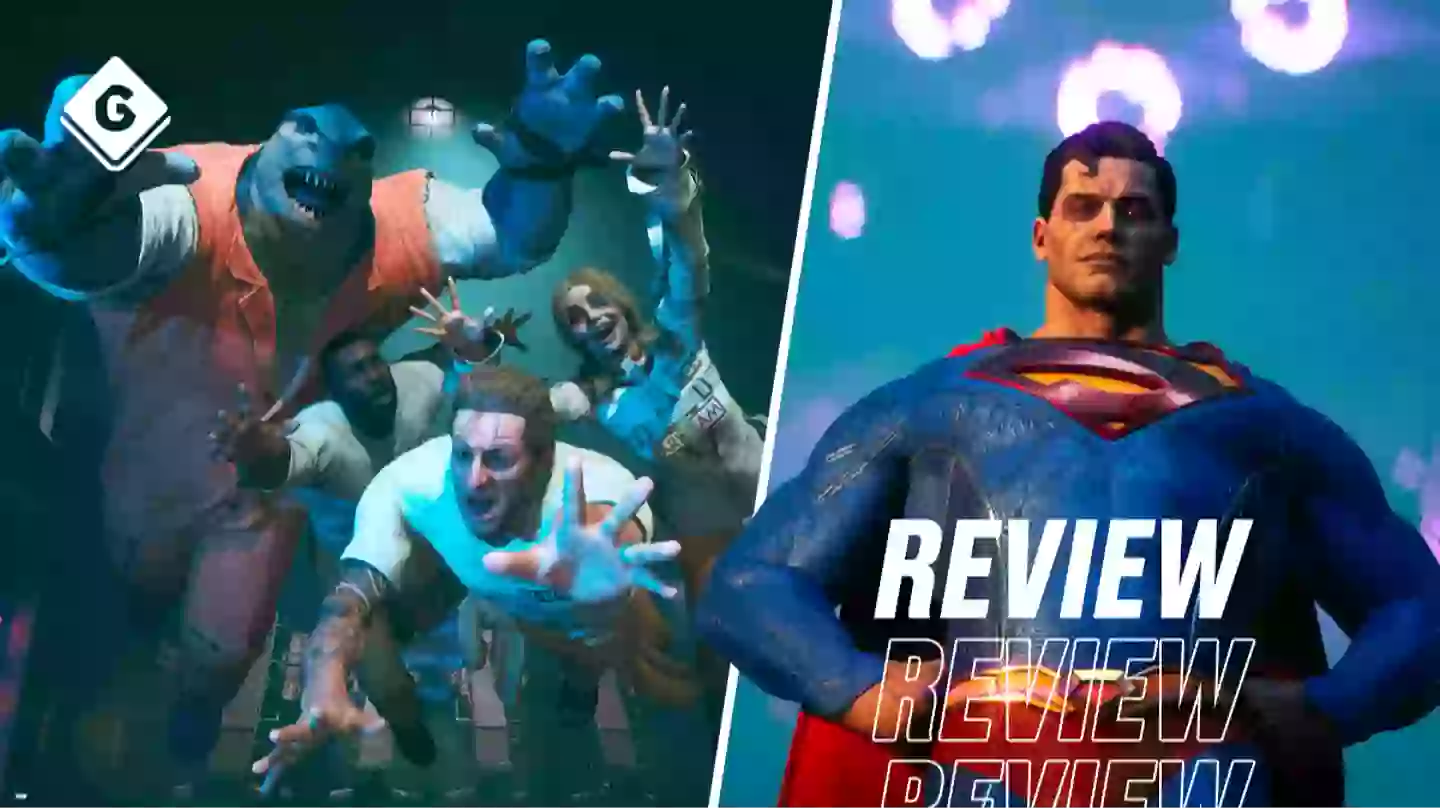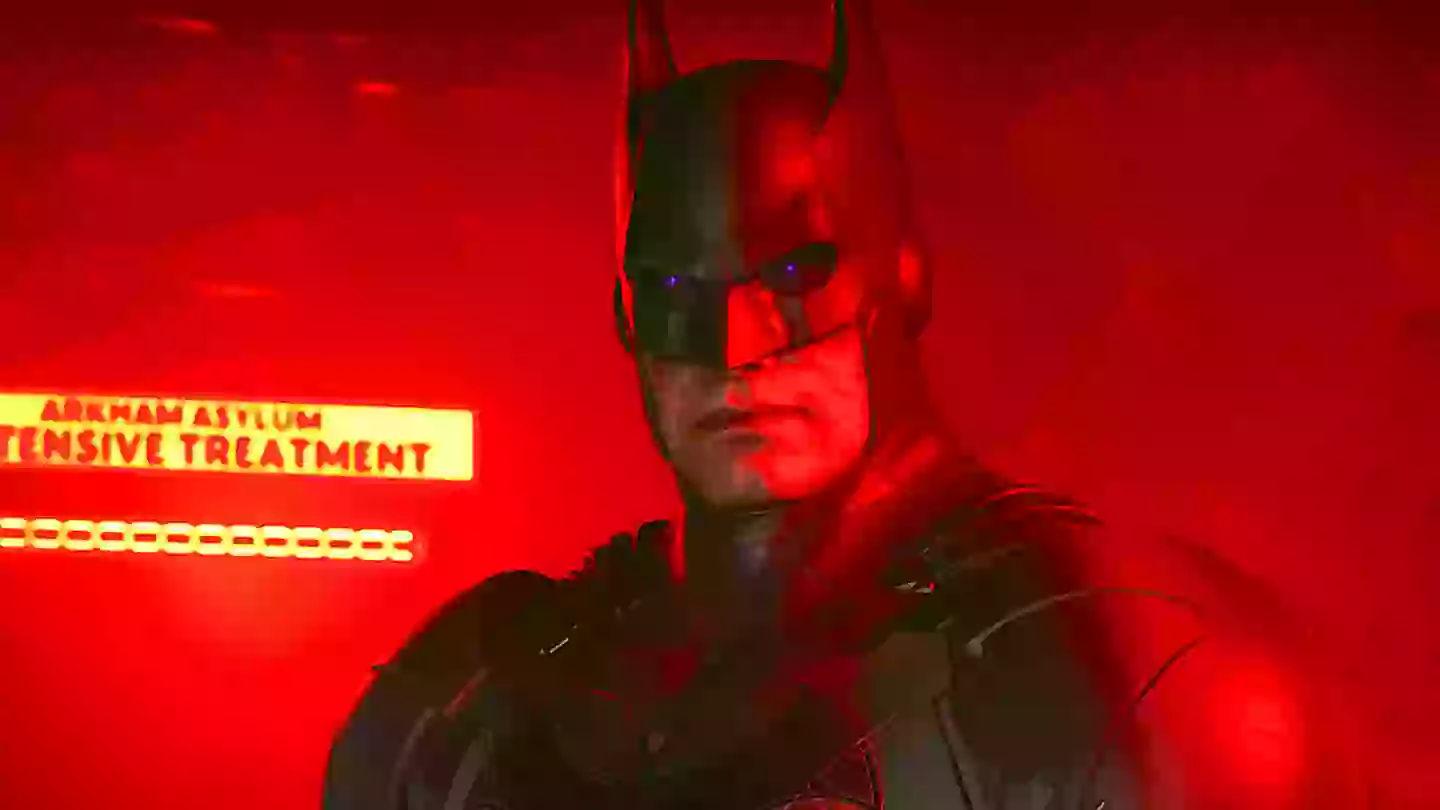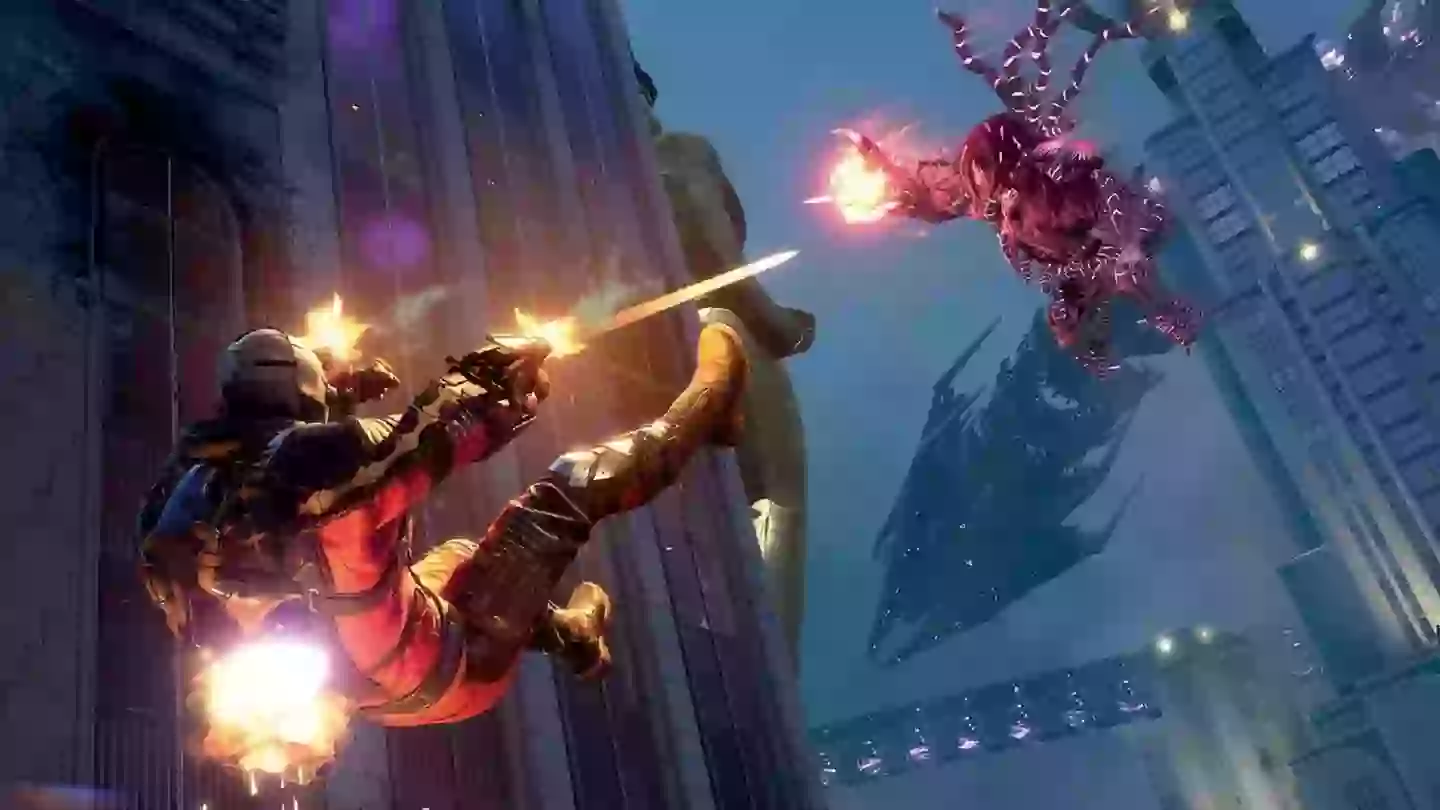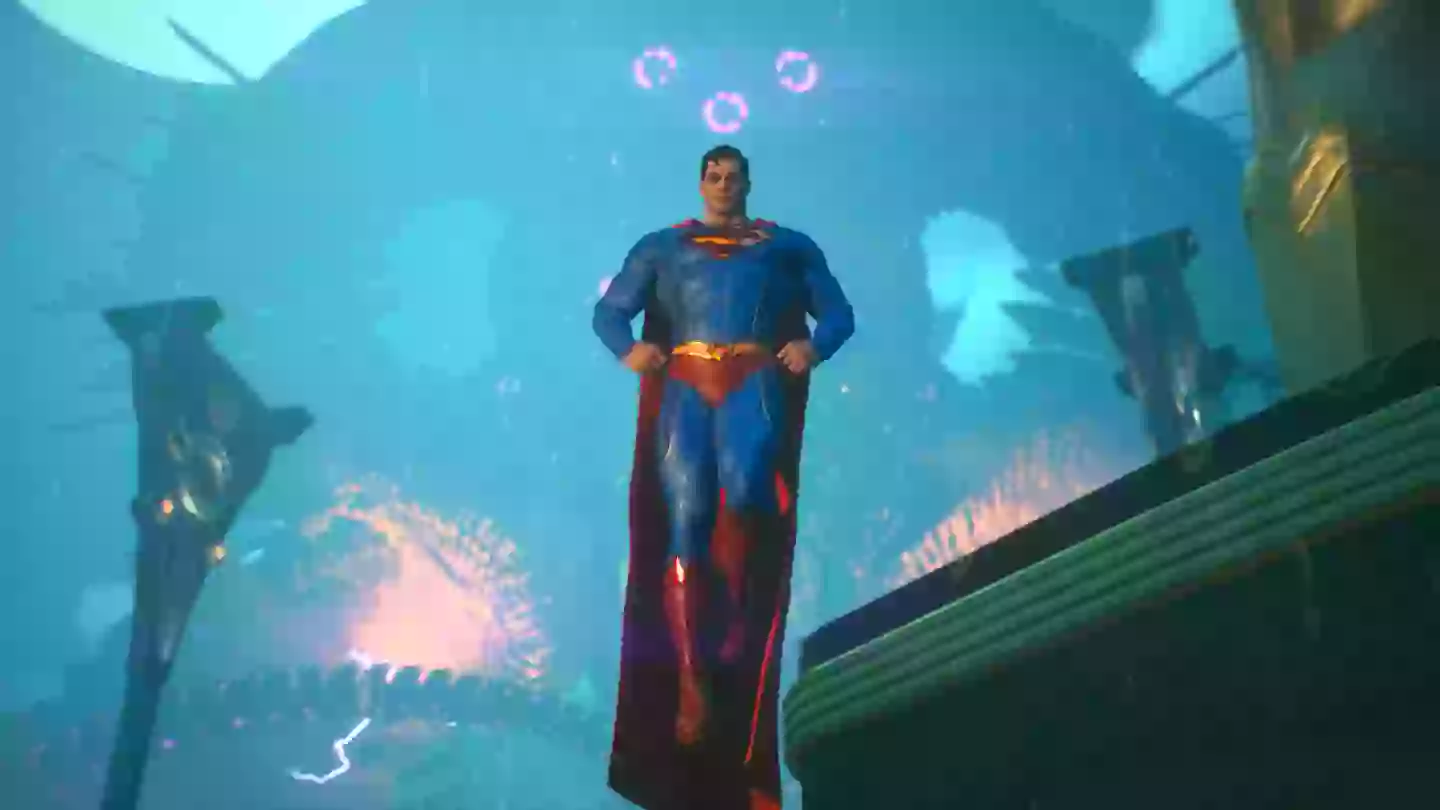
Suicide Squad: Kill The Justice League had a lot going for it. A star-filled cast, the power of new-gen consoles and the legendary reputation of the Batman: Arkham games, but was it enough? Unfortunately, no, no it wasn’t.
When Rocksteady Studios announced Suicide Squad: Kill The Justice League, I was intrigued, to say the least. We all knew a game about DC’s infamous Task Force X team was a no-brainer, but having them face-off against Earth’s greatest heroes seemed like a step too far.
Check out Suicide Squad: Kill The Justice League below
Of course the whole point of the Suicide Squad is they’re criminals. They’re expendable. These guys, gals and anthropomorphic sharks can either rot in a cell for the rest of their lives or take a chance on a suicide mission to lessen their sentence and potentially escape captivity. With that in mind I was eager to see how these characters would react when they found out their targets included the man of steel, Superman, the fastest man alive, Flash, the world’s greatest detective, Batman and the intergalactic police officer Green Lantern.
Advert
I was somewhat impressed with the story at first. After assembling Harley Quinn, Deadshot, Captain Boomerang and King Shark and letting them loose into a war-torn Metropolis it was fun to see how these characters got to know each other and where their loyalties lied. Deadshot desperately wants to escape so he can reunite with his daughter, Boomerang wants to resume his criminal activities, King Shark wants to return to his underwater Kingdom and Harley is generally just along for the ride but is arguably the strongest character in the game. None of them want to be there, but the bombs in their necks prevent them from leaving or disobeying, so they take all orders from Amanda Waller and Colonel Rick Flag until they’ve either won or died in the process.
Without getting into spoilers you do see the squad grow closer together, though it does feel like forced character development at times. Nevertheless, there is a character arc for the villains, and the interplay between them is the main reason you’d want to play the story. It was also incredibly funny at times. Some jokes did come across as cringeworthy, and some punchlines you could see coming a mile away, but I did find myself genuinely chuckling at a lot of the humour, and full credit goes to the writers and actors for that.

My main criticism with the story is how it handles the objective of killing the Justice League. Make no mistake, that is what you’re doing, and unfortunately I think it could have been handled better.
Advert
The elephant in the room is obviously Batman. The Arkham games solidified Rocksteady’s take on the Dark Knight as one of the most resilient and unstoppable superheroes in fiction. Following the events of Batman: Arkham Knight it’s explained that Batman faked his death and continued his vigilantism in secret, but re-emerging to join the Justice League. The heroes have since been turned to the dark side by Brainiac, and it’s up to you to put them all down.
Now the main issue I had with the game’s League antagonists is it didn’t feel like the emotional send-off it could have been. While they were under the influence of evil, they were still heroes once, yet the game and story treats them more like one-off goons. Following each boss there’s no time to really appreciate that a good person has had to be killed to save the world, and whenever it feels like you’re going to have that moment it’s quickly cut-off by a joke or story event. There didn’t need to be an Oscar worthy send-off scene for each hero, it just would have been nice to have a moment to truly appreciate the lengths the player has had to go to in order to beat the game, especially given the emotional connection I’m sure many fans have to these characters.

Aside from that, I think the story is worth enduring, and while there were several moments and plot devices that just seemed way too convenient you have to remember this game is based on comic books, realism flew out the window before you even loaded up the game.
Advert
Speaking of comic books, Suicide Squad: Kill The Justice League features yet another iconic DC location, Metropolis. It’s a complete tonal shift from Gotham City, and not just because we can finally see the sunlight. While Gotham is dark, gritty and a little bit depressing, Metropolis stands tall, shimmering in the sun and presenting itself as a golden utopia for people and meta-humans, or at least it did. The city is full of superhero memorabilia, from posters, balloons, graffiti and the towering statues of Superman and his friends. Brainiac’s invasion has done a number on the place, and the Justice League’s transition from heroes to villains it only made more bitter by the glistening reminders of the saviours they were before their corruption. To top it all off, Brainiac’s skull ship casts a bleak shadow over the city, always watching the player with its fluorescent eyes. It’s quite unsettling at times especially when it silently communicates with the infected Justice League. Metropolis is a well-designed open world, and features plenty of secrets and Easter eggs for diehard Rocksteady fans to keep an eye out for, including Batman himself who can occasionally be spotted watching you from a distance, which is far more terrifying than you’d think.
Swiftly moving onto the gameplay, I can confidently say it largely doesn’t disappoint.It’s clear a lot of time and effort has gone into crafting the experience. Players can choose whichever villain they want and are greeted to several different playstyles depending on their traversal equipment and upgrades. I favoured Deadshot because his jetpack made getting from A to B a breeze and I loved the verticality of his moveset. The other characters are just as fun, with Harley swinging with Batman’s grapple gun, Shark bounding across the map with mystical powers, and Boomerang zooming around with a speed force gauntlet. All characters felt unique and you never felt pressured to stay locked to the first character you picked.

Once you’ve selected your character you can begin your rampage, using a variety of weapons and grenades to wreak havoc on Brainiac’s troops. You can swap your loadout at any time, and as you progress the story and complete side missions you’re rewarded with plenty of new toys to play with across all characters. You can also upgrade them with a skill tree that essentially creates a character build. For example, my version of Deadshot carried a sniper rifle and assault rifle through the entire game as I felt they best fit my playstyle. This meant when it came time to upgrade I could choose the upgrades that catered to that style, like ones that gave me more assault rifle damage whilst airborne, or increased by combo with headshots. Some are more trivial like giving you an extra grenade slot. You could really make your characters your own and enjoyed the flexibility that came with progression.
Advert
When it finally came time to shoot some baddies and complete some objectives I can’t deny I had an absolute blast. Tight controls, complete freedom of movement and non-stop explosions all blended together to form a cohesive gameplay loop that only rarely got tiring after an extensive play session. I was a big fan of having to carefully select which targets to outright destroy and which ones I should use to replenish my shields, as shooting an enemy in the legs gave you a chance to supercharge them and keep you in the game. Soaring through the air as Deadshot while landing pristine sniper shots felt incredible, and the cherry on top was rocketing over to a cluster of enemies and unleashing a barrage of explosives which cleared entire rooftops at times. The characters themselves also have a thrilling time as they’re constantly quipping, and your radio support also comments on your performance when you attain a high combo.
The fun only escalated when I hopped online to play with friends. Suicide Squad: Kill The Justice League boasts a great online mode, and while there was the occasional technical hiccup it did the job and provided plenty of co-operative fun and plenty of laughs. I was particularly impressed with how seamless story progression worked as well. I was a few missions ahead of my friend when I joined his game, and was amazed to discover that any progress made in his game automatically applied to my own and vice versa. Whether you want to lock-in to some tough raid missions with your squad or kick back and enjoy some mindless fun while talking about life, the multiplayer will accommodate.

Now while the gameplay itself was rather fun, I can’t say the same about the missions. The main problem is a huge lack of variation. Mission types are recycled throughout and typically revolve around defending a point from enemies, escorting some of the slowest vehicles in gaming history, or rescuing civilians/allies and delivering them to a transport to name a few. These missions make up almost the entirety of the story mode and the side content, so it did start to feel tedious after a while.
Advert
The same can be said for the boss fights, which were quite weak in terms of story and gameplay design. Since Task Force X are (mostly) normal humans there needed to be some way to level the playing field, as even King Shark doesn’t have the power necessary to go toe-to-toe with Superman by himself. The “solutions” typically revolved around some gadget or special bullet, which meant gameplay in boss battles was exactly the same as the other missions, shoot it till it dies. Credit where credit is due though, it did feel like I was fighting the Justice League, mainly because I often felt way out of my league and hopelessly outmatched. The fights themselves aren’t hard, but a lot happens at once so if you’re not on your toes and using everything the game has taught you up to that point you’re going to have a bad time. This inevitably led to some humorous moments, like during the Superman fight where I completely lost track of where he was before seeing some enormous object hurtling towards me at breakneck speed. Overall the fights didn’t feel very special, and seemed to be more of a cool spectacle than something you’d actually want to play.

Finally, let’s talk about the post-game. Without going into spoilers the game doesn’t end when the credits roll. You can venture back out into Metropolis and finish any side content you’re yet to complete, solve more of Riddler’s god-forsaken puzzles, and take on raid bosses that transport the squad to Elseworld’s, alternate realities that are also under Brainiac’s control. That’s about it at the time of writing, though Rocksteady has confirmed new challenges, characters and locations will be on the way throughout the year, all for free. After the first year of support it’ll transition to paid-for season pass content for as many years as the game can feasibly be supported.
While no one can speak for this new content as the first wave hasn’t released it, a lack of variety in the missions could be the game’s downfall in the long term. By the time I’d finished the base game and some of the side content I felt like I’d seen everything the game had to offer and didn’t fancy playing much more.
Ultimately Suicide Squad: Kill The Justice League is a decent enough continuation of the beloved Arkham series, though I just can’t shake the feeling that this isn’t the type of game Rocksteady Studios wanted to make after Batman: Arkham Knight. While the combat is fun and a blast to play with friends, the mission variety does make it feel repetitive after a while, and the post-game being more of the same doesn’t really help with that.
The story is serviceable, and does a good enough job of filling in the details on what became of Batman in this universe, though you could argue that’s the only thing it really has going for it by the time the credits roll. Depending on how you slice it, Suicide Squad: Kill The Justice League feels like the last breath of the Arkhamverse, rather than an emotional send-off that evolves the series in a meaningful way.
Pros: Decent story, combat is bombastic and expressive, Metropolis is a fun sandbox, multiplayer with friends is enjoyable
Cons: Repetitive missions, bosses feel like a let-down, post-game feels like more of the same
For fans of: Batman: Arkham, Borderlands, Destiny 2, looter-shooters
6/10: Good
Suicide Squad: Kill The Justice League is out now for PlayStation 5 (version tested), Xbox Series X/S and PC. A review code was provided by the publisher, Warner Bros Games. Read a guide to our review scores here.
Topics: Xbox, PlayStation, PC, Batman, Warner Bros, DC